The detailed mechanism for oxidative dehydrogenation of propane on the 1VO4(CH3)3 surface has been studied in depth with density functional theory (DFT) calculations at the B3LYP level and standard split-valance basis set, 6-31+G*. Monomeric vanadia specie was considered and modeled as catalysis. In addition, the mechanisms of the two complete catalytic cycle, involving the regeneration of the reduced catalyst using O2 gaseous have been reported. The reaction proceeds in two subsequent steps which at the first, one hydrogen abstracting by the vanadium of V= O1 group with about 48.35 cal/mol activation energy is the rate determining step. Subsequently, second intermediate has been formed through a bond formed between the propyl radical and O2 atom (V-O2). In continue, the O1 atom abstracts one hydrogen atom from the methyl group with a 131.63 kcal/ mol barrier to form propene by passing to second transition state. The results of our calculations have found that all the reactions involve vanadyl oxygen (V=O1), with the bridging oxygen (V-O-C) serving to stabilize the isopropyl radical intermediate.
Bu çalışmada propanın 1VO4(CH3)3 yüzeyindeki oksidatif dehidrojenasyonu, bölünmüş valans temel kümesi 6-31+G* ve B3LYP seviyesinde Yoğunluk Fonksiyon Teorisi hesaplamaları ile incelenmiştir. Monomerik vanadyum türleri kataliz için gözönüne alınmış ve modellenmiştir. Bunlara ek olarak O2 gazı kullanılarak yenilenen indirgenmiş katalizör içeren iki tamamlanmış katalitik döngü sunulmuştur. Tepkime iki alt basamakta ilerlemektedir; birinci basamakta bir hidrojen 48,35 cal/mol aktivasyon enerjisiyle V= O1 vanadyum grubu tarafından alıkonulur ve hız belirleyici basamaktır. Sonrasında propil radikali ve O2 atomu arasında (V-O2) oluşan bağ dolayısıyla ikinci ara ürün oluşur. Devamında O1 atomu propen oluşumu ve ikinci geçiş haline ulaşmak için metil grubundan 131.63 kcal/mol enerjiyle bir hidrojen koparır. Sonuçların, bütün tepkimelerde izopropil ara radikali kararlı kale getirmek için vanadil oksijen (V= O1) ve köprüleme oksijeni (V-O-C) kullanıldığını göstermiştir.
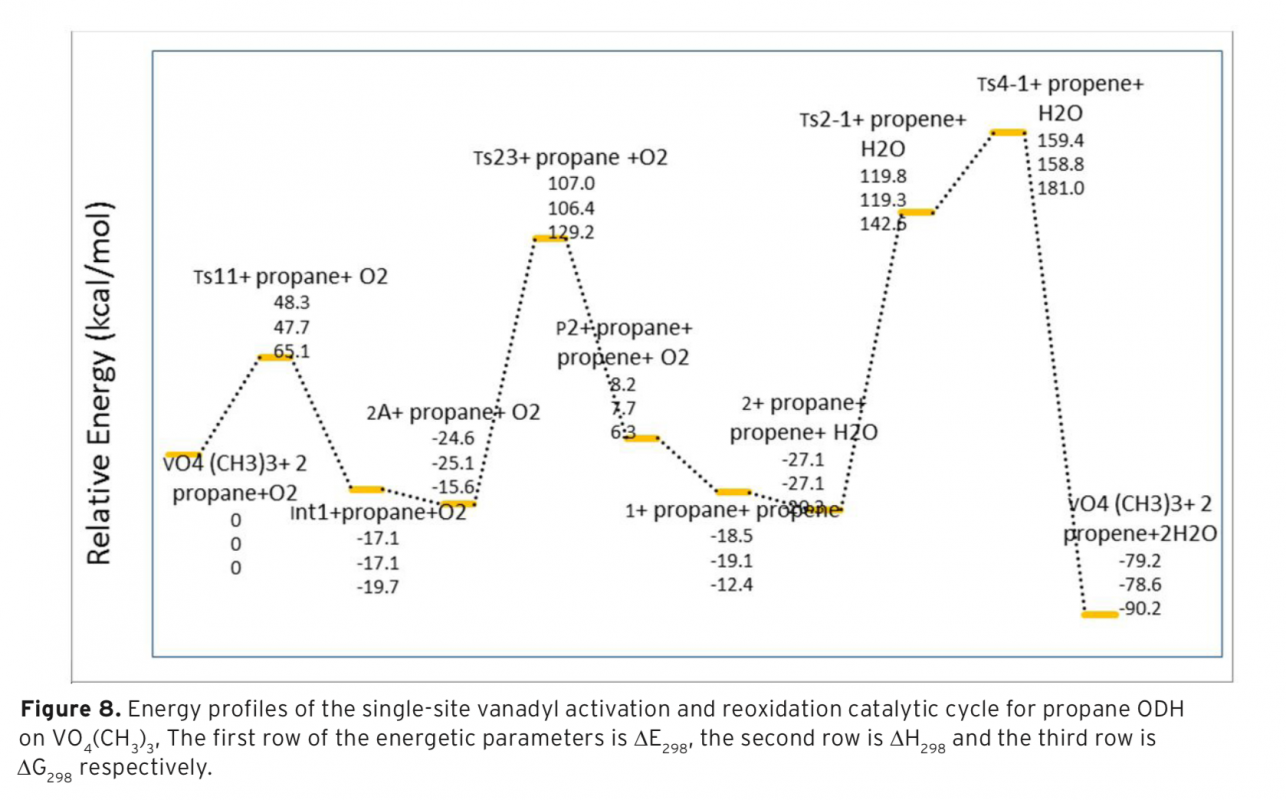
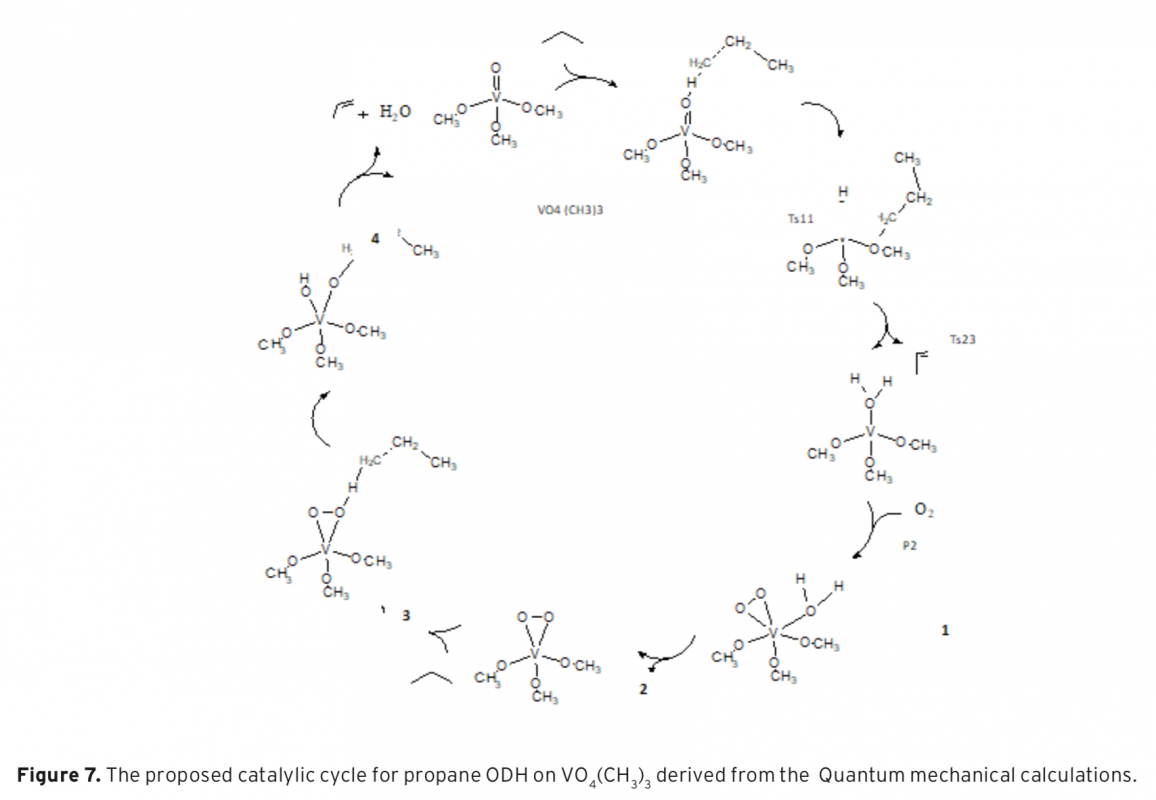
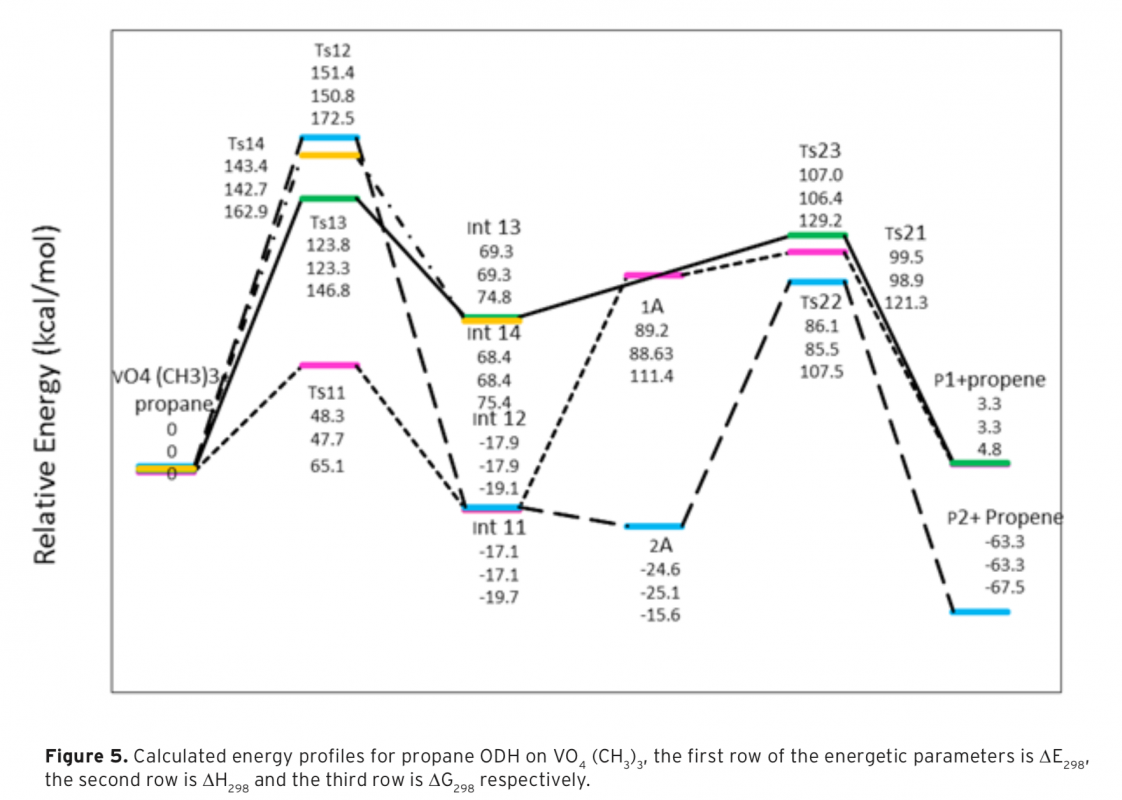
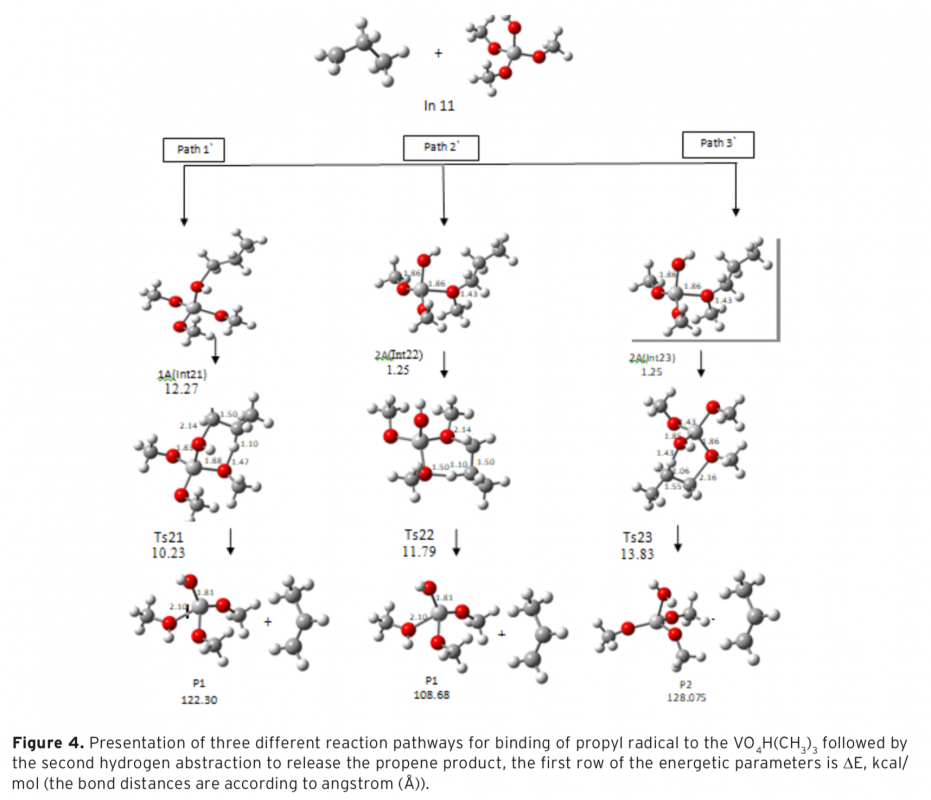
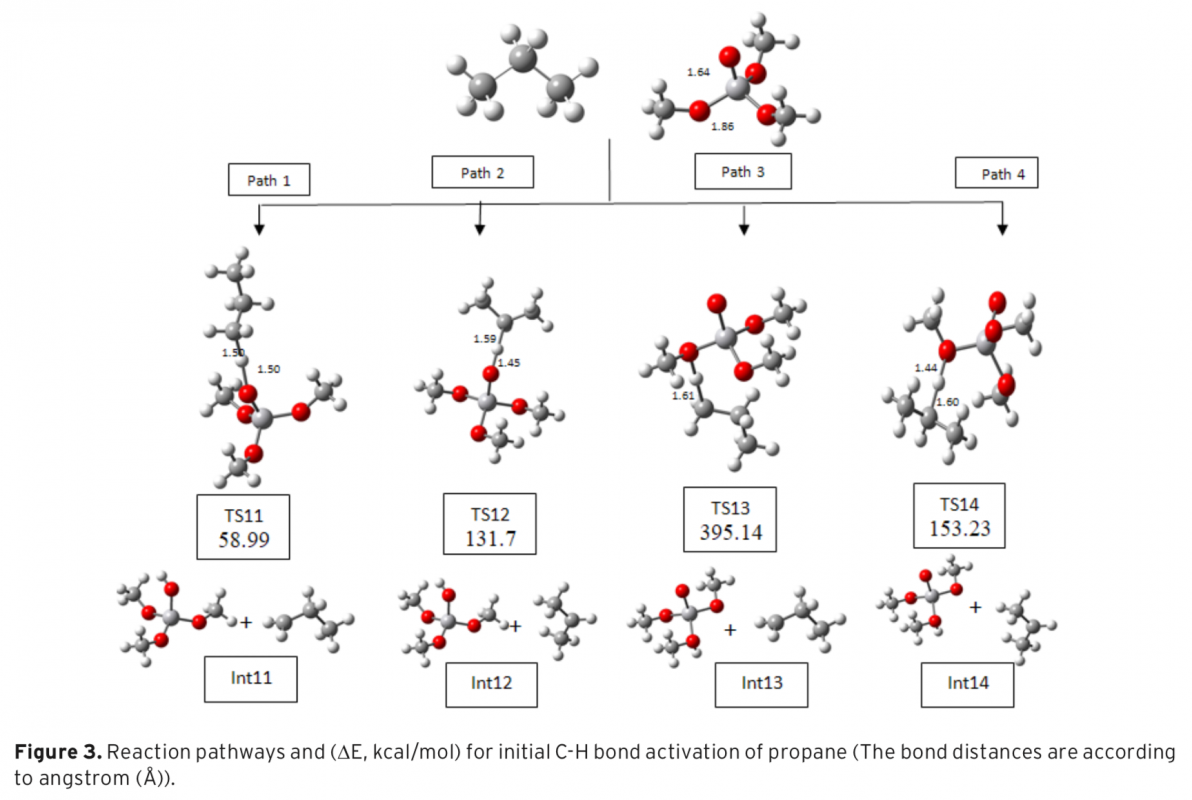
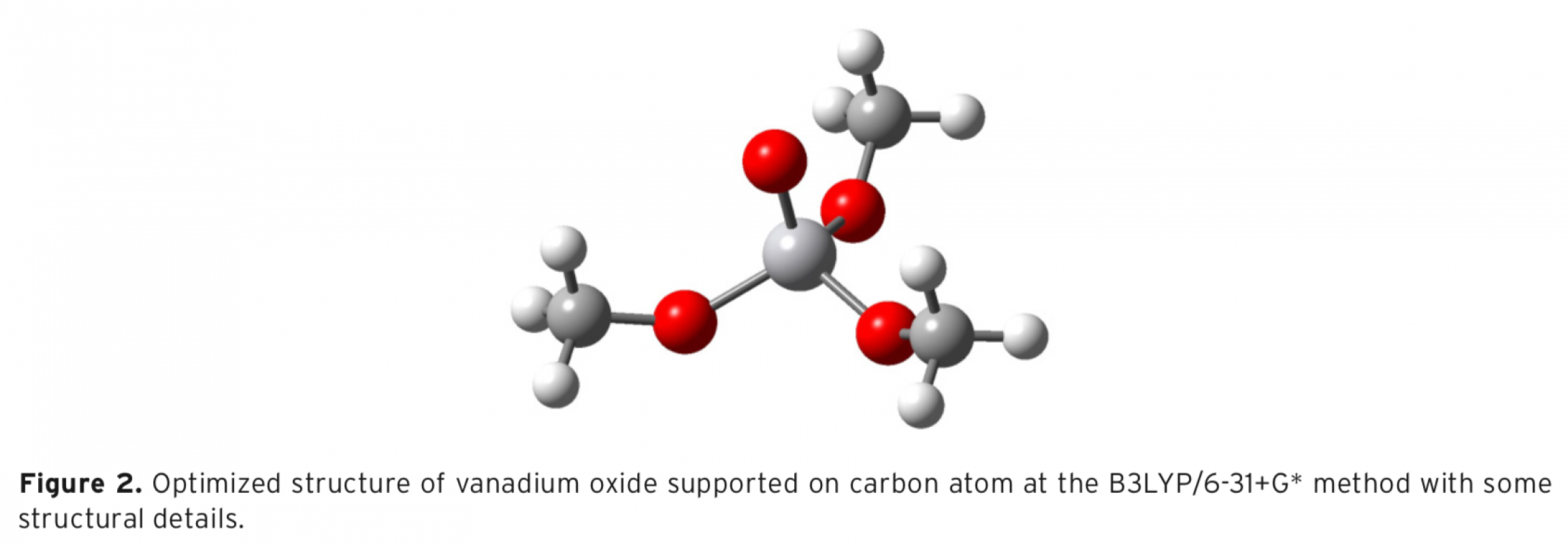
Download Article in PDF (549.3 kB)